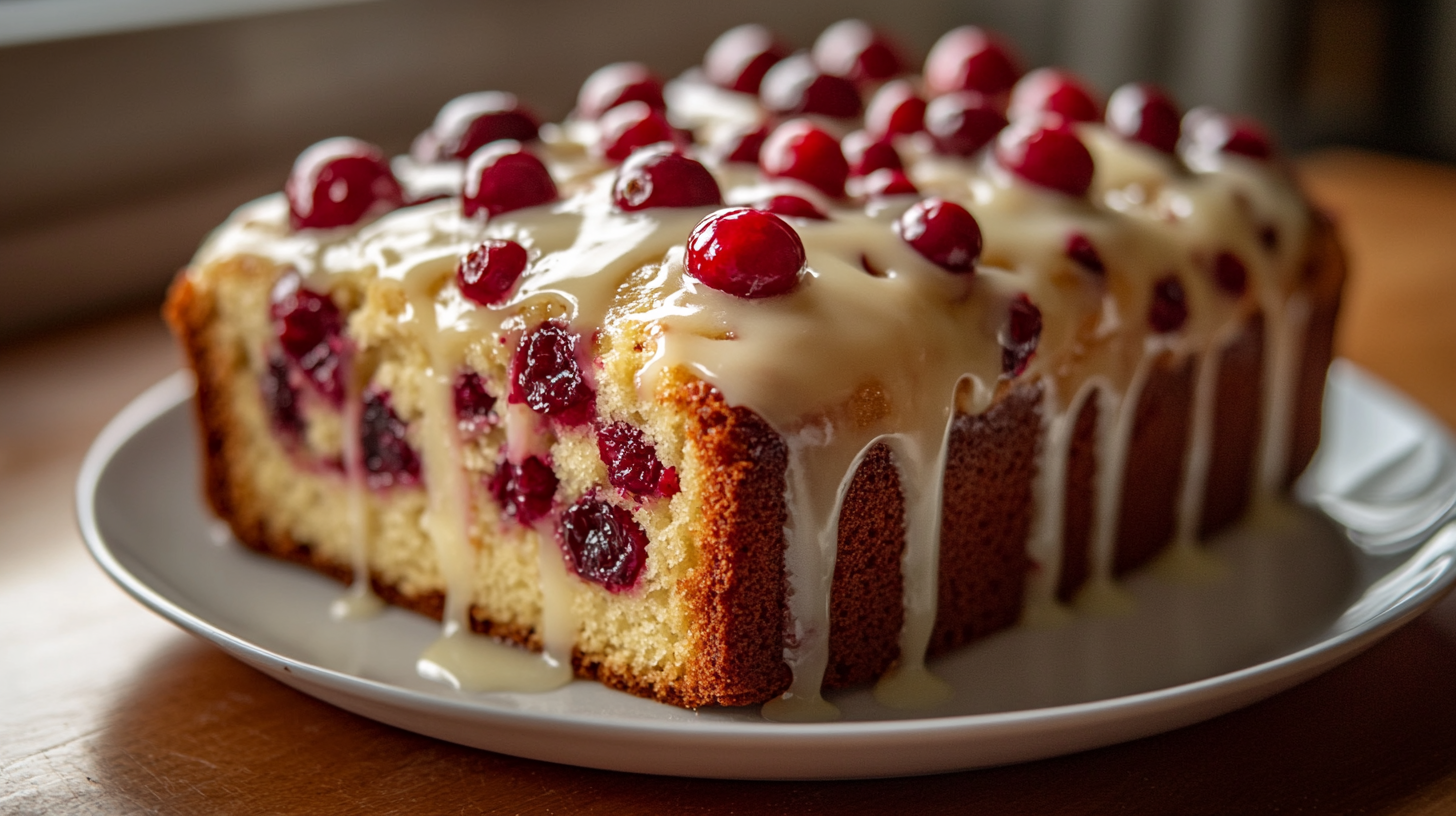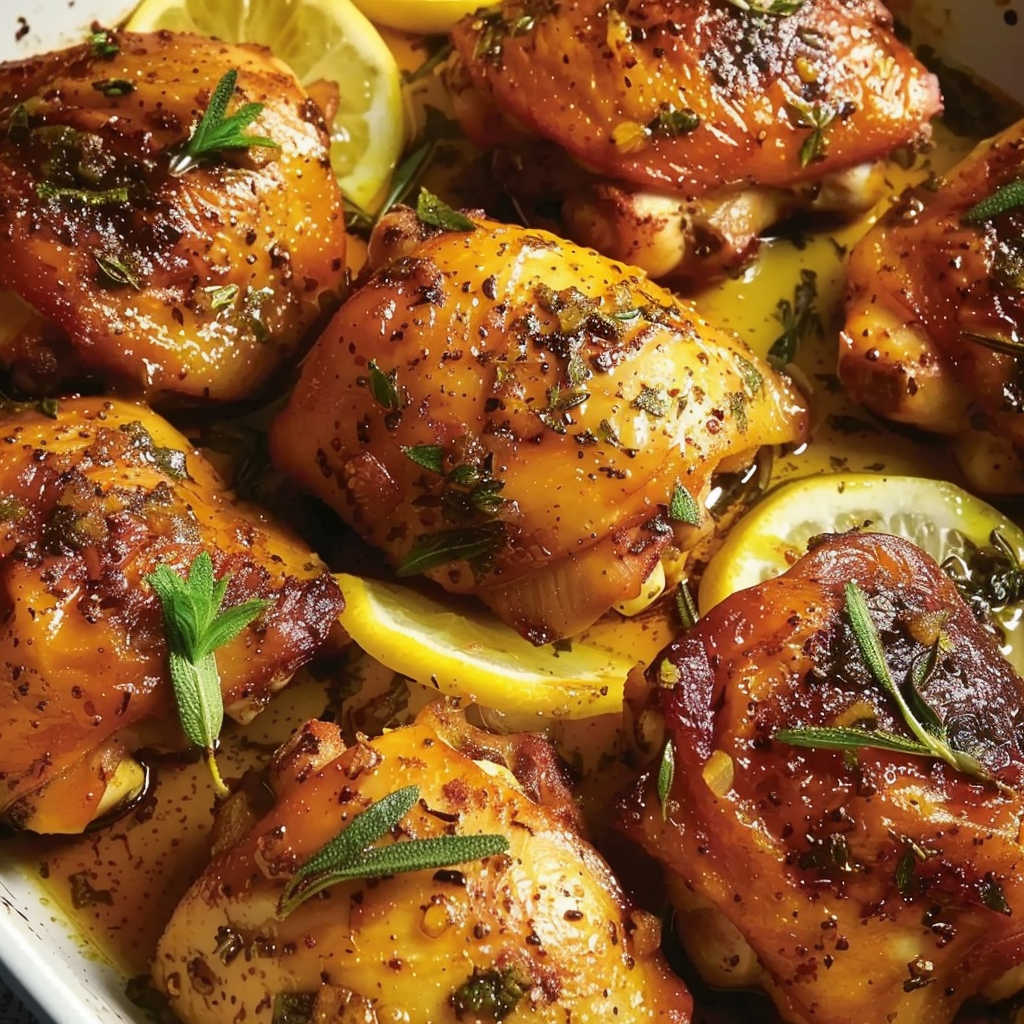Cranberry Orange Bread is a delightful and festive treat that’s perfect for brightening up the holiday season or any special occasion. Bursting with the vibrant flavors of sweet oranges and tart cranberries, this moist and flavorful bread makes an excellent choice for breakfast, a light dessert, or even a mid-day snack. The combination of fresh or frozen cranberries with zesty orange creates a beautiful balance of tangy and sweet, offering a refreshing twist on traditional fruit breads.
What truly elevates this bread is the simple orange glaze that adds an extra layer of sweetness and sophistication. Drizzled over the top, the glaze seeps into the bread, enhancing its citrus flavor while giving it a glossy, bakery-worthy finish. Whether served as a morning indulgence or as part of a holiday spread, Cranberry Orange Bread with a touch of glaze is sure to be a crowd-pleaser, bringing warmth and cheer to any gathering.
History and Popularity of Fruit-Based Breads
Fruit-based breads have a rich history in culinary traditions across the world, often evolving from simple, home-baked loaves to beloved classics. Historically, fruit was added to bread to enhance flavor, moisture, and shelf life, especially in times when fresh produce was less accessible. Over the centuries, bakers have incorporated a variety of fruits like berries, bananas, and apples into bread recipes, creating both sweet and savory options.
The popularity of fruit breads surged in the 20th century, particularly with recipes like banana bread and zucchini bread. These loaves became household staples in America during times of economic hardship, such as the Great Depression, when they were a practical way to use overripe or excess produce. Their ease of preparation and ability to stay fresh for days further cemented their appeal.
Seasonal fruit breads, such as cranberry orange bread, are especially popular in the fall and winter months. The tartness of cranberries pairs beautifully with citrus flavors, making it a festive choice for holiday gatherings. As a seasonal favorite, cranberry orange bread offers a delicious way to celebrate the flavors of the colder months, combining tradition with a touch of creativity.
Ingredients Breakdown and Their Role
- All-purpose Flour
All-purpose flour is ideal for Cranberry Orange Bread because it provides the perfect balance of structure and tenderness. It has enough protein to form a stable crumb without making the bread too dense or tough. Coating the cranberries with a small amount of flour before folding them into the batter prevents them from sinking to the bottom during baking. This ensures that the cranberries are evenly distributed throughout the loaf, adding bursts of tartness in every bite. - Baking Powder & Salt
Baking powder acts as a leavening agent, helping the bread rise and creating a light, fluffy texture. Without it, the bread would be dense and heavy. The addition of kosher salt is equally important, as it enhances the overall flavor of the bread by balancing the sweetness of the sugar and the tartness of the cranberries. It also plays a role in strengthening the gluten structure, contributing to the bread’s overall stability. - Yogurt
Plain whole milk yogurt adds moisture and a slight tang to the bread, ensuring a tender crumb. Its acidity also reacts with the baking powder to help the bread rise, making the loaf soft and fluffy. The yogurt’s creaminess contributes to the overall richness, and its fat content helps keep the bread moist for several days. - Sugar
Sugar not only sweetens the bread but also aids in browning the crust, giving the loaf a golden color and slight caramelization. While granulated sugar is the standard choice, alternatives like coconut sugar can be used for a more complex flavor. However, altering the sugar may affect the texture and sweetness of the bread. - Eggs
Eggs act as a binder, emulsifying the ingredients and providing structure to the bread. They help the bread rise and contribute to its overall stability. Fresh, large eggs are crucial, as they offer the right amount of liquid and fat to keep the loaf from becoming dry or crumbly. - Orange Zest and Juice
Orange zest adds concentrated citrus flavor to the bread, infusing the loaf with a fragrant aroma. The juice, used in both the syrup and glaze, enhances the bread’s overall citrus profile, providing a fresh, bright taste that contrasts with the tartness of the cranberries. The zest and juice work together to create a well-rounded orange flavor. - Cranberries
Both fresh and frozen cranberries can be used in this recipe, though frozen ones should be thawed first. Cranberries provide a tart contrast to the sweet bread and offer a pop of color that makes the loaf visually appealing. Their natural acidity also helps balance the richness of the yogurt and sugar. - Vegetable Oil
The use of vegetable oil over butter ensures a moist, tender crumb that stays fresh for longer. Oil contributes to the bread’s softness without making it too rich or heavy. If desired, substitutions like coconut oil or melted butter can be used, though these may alter the flavor and texture slightly.
Step-by-Step Instructions for Making Cranberry Orange Bread
- Preheat the Oven & Prepare the Loaf Pan
Preheating the oven to 350°F (175°C) is crucial because it ensures the oven reaches the right temperature before the batter goes in. This helps the bread bake evenly from the start, preventing issues like undercooking in the center or overbrowning on the outside. While the oven preheats, grease and flour a 9×5-inch loaf pan. To do this, spread a thin layer of vegetable oil or butter over the entire surface of the pan, then lightly dust it with flour. Shake out any excess flour to prevent the bread from sticking to the pan, ensuring easy removal after baking. - Mix Dry Ingredients
In a medium bowl, combine 1 1/2 cups of all-purpose flour, 2 teaspoons of baking powder, and 1/2 teaspoon of kosher salt. Sifting these ingredients together is important because it aerates the flour and evenly distributes the baking powder and salt throughout the mixture. This ensures that the bread will rise uniformly and have a consistent texture. Sifting also helps break up any clumps in the flour, preventing dense pockets from forming in the finished loaf. - Whisk Wet Ingredients
In a larger bowl, whisk together 1 cup of plain whole milk yogurt, 1 cup of sugar, 3 large eggs, 2 teaspoons of grated orange zest, 1/2 teaspoon of pure vanilla extract, and 1/2 cup of vegetable oil. Whisking thoroughly ensures the sugar dissolves and the eggs are fully incorporated, which is key for a smooth batter. Be sure to mix these ingredients until just combined. Overmixing can lead to a dense, tough bread, as too much stirring can cause the gluten in the flour to develop excessively, affecting the bread’s texture. - Combine Wet and Dry Mixtures
Gradually add the dry ingredients to the wet mixture, folding gently until the flour is fully incorporated. Use a spatula or large spoon to fold rather than stir, as this method is gentler and helps prevent overmixing. Fold the ingredients until there are no visible streaks of flour, but stop as soon as everything is combined. Overmixing at this stage can lead to tough or dense bread. - Coat and Fold in Cranberries
Toss 1 1/2 cups of fresh or thawed frozen cranberries with 1 tablespoon of flour before folding them into the batter. This coating helps keep the cranberries suspended in the batter and prevents them from sinking to the bottom during baking. To fold them into the batter, gently stir them in using a spatula, ensuring the cranberries are evenly distributed without being crushed. - Pour Batter and Bake
Pour the prepared batter into the greased and floured loaf pan, using a spatula to spread it out evenly. For a uniform rise, make sure the batter is level across the top of the pan. Bake the bread in the preheated oven for 50-55 minutes, or until a toothpick inserted into the center of the loaf comes out clean or with just a few moist crumbs attached. The top should be golden brown, and the bread should have a nice, even rise. Avoid opening the oven door too often during baking, as this can cause the bread to sink or bake unevenly. - Cool the Bread Properly
After removing the loaf from the oven, allow it to cool in the pan for about 10 minutes. This brief resting period helps the bread settle and makes it easier to handle. After 10 minutes, transfer the loaf to a wire rack to cool completely. Cooling the bread on a wire rack ensures that air circulates around the loaf, preventing the bottom from becoming soggy due to trapped moisture. Let the bread cool completely before glazing or slicing, as cutting into it too soon can cause it to crumble.

Making the Orange Syrup
To make the orange syrup, which adds a delicious burst of citrus flavor and extra moisture to the bread, follow these simple steps:
- Combine the Ingredients:
In a small saucepan, combine 1/3 cup of fresh orange juice and 1/3 cup of sugar. Freshly squeezed orange juice is preferred for its vibrant flavor, but store-bought juice can also be used in a pinch. - Heat and Dissolve the Sugar:
Place the saucepan over medium heat and stir the mixture constantly as it warms. It’s important to ensure that the sugar fully dissolves into the orange juice before the mixture comes to a simmer. Stirring continuously helps prevent the sugar from burning or sticking to the bottom of the pan. - Simmer the Syrup:
Once the sugar is dissolved, allow the mixture to come to a gentle simmer. Let it simmer for about 3 minutes, stirring occasionally. This process helps concentrate the flavors and slightly thickens the syrup, making it easier to absorb into the bread. Be careful not to overcook it, as you don’t want the syrup to caramelize. - Apply the Syrup:
While the bread is still warm (but no longer hot), poke several small holes in the top and sides of the loaf using a toothpick or a skewer. This allows the syrup to penetrate the bread more effectively. Brush the syrup over the surface of the loaf using a pastry brush, making sure to cover the entire loaf. The syrup will soak into the bread, adding moisture and a burst of citrus flavor that complements the cranberries perfectly.
Let the bread cool completely before applying the glaze. The syrup makes the bread more tender and enhances its overall flavor.
Making the Orange Glaze
To create the perfect orange glaze, start by combining 1 cup of sifted confectioner’s sugar and 2-3 tablespoons of fresh orange juice in a small bowl. Use a whisk to blend the two ingredients together until the mixture becomes smooth and free of lumps. The glaze should have a thick, but pourable consistency.
If the glaze is too thick, add more orange juice, one teaspoon at a time, until it reaches a drizzling consistency. Conversely, if the glaze is too thin, sift in a little more confectioner’s sugar to thicken it.
To apply the glaze, drizzle it evenly over the cooled bread using a spoon or fork. Let the glaze run down the sides of the loaf for a visually appealing presentation. Allow the glaze to set for about 10-15 minutes before slicing the bread to ensure it hardens slightly and doesn’t run off when cutting. This will give your bread a beautiful, glossy finish.
Serving Suggestions & Variations
- Serving Ideas
Cranberry Orange Bread pairs wonderfully with a hot cup of coffee or tea, making it a perfect option for breakfast or an afternoon snack. For an extra indulgent experience, serve the bread slightly warmed or toasted. Spread a bit of butter on the warm slices to enhance the flavor and give the bread a richer texture. It’s also a great option to include in holiday brunch spreads or as a sweet offering during dessert time. - Variations
There are many ways to customize this recipe to suit different tastes. For added texture, consider folding in chopped nuts such as pecans or walnuts, which complement the citrus and cranberry flavors beautifully. If you prefer a different fruit, blueberries can be substituted for cranberries for a milder flavor.
The recipe can also be adapted for mini loaves or muffins by dividing the batter into smaller pans. Reduce the baking time accordingly—about 25-30 minutes for muffins and mini loaves.
For dietary needs, the recipe can be made gluten-free by substituting all-purpose flour with a gluten-free flour blend. To make it dairy-free, replace yogurt with a dairy-free alternative like almond or coconut yogurt.
Troubleshooting Common Issues
- Bread is Undercooked in the Middle
If your bread is undercooked in the center, it’s essential to check for doneness using a toothpick or skewer. Insert it into the center of the loaf; it should come out clean or with a few moist crumbs, not wet batter. If needed, extend the baking time in 5-minute increments, but be cautious not to overbake the edges. - Bread is Dry or Crumbly
Dry or crumbly bread can result from overbaking or not enough moisture in the batter. Ensure you measure the oil and yogurt accurately, as these ingredients provide essential moisture. Also, monitor the baking time carefully to avoid overcooking the loaf, which dries it out. - Glaze is Too Runny or Too Thick
If your glaze is too runny, add more sifted confectioner’s sugar, a tablespoon at a time, to thicken it. If it’s too thick, gradually add more orange juice, one teaspoon at a time, until the desired consistency is reached for smooth drizzling.
FAQs
- Can I use dried cranberries instead of fresh or frozen cranberries?
Yes, you can substitute dried cranberries for fresh or frozen ones. To achieve a similar texture, rehydrate dried cranberries by soaking them in hot water or orange juice for about 10 minutes. Drain them well before folding into the batter. This will plump up the cranberries, providing moisture and a milder tartness similar to fresh ones. - Can I use another citrus fruit instead of orange?
Yes, lemon or lime can be used in place of orange for a different citrus profile. Lemon will give the bread a sharper, more tangy flavor, while lime adds a unique, zesty twist. Adjust the amount of zest and juice according to your taste preference, but keep the quantities similar for balance. - How do I prevent my cranberries from sinking in the bread?
To prevent cranberries from sinking, coat them with 1 tablespoon of flour before adding them to the batter. This helps them stay suspended during baking. Ensuring the batter is not too thin also helps keep the cranberries evenly distributed. - How long does Cranberry Orange Bread last?
Cranberry Orange Bread can last up to 3 days at room temperature when wrapped in plastic or stored in an airtight container. For longer storage, refrigerate it for up to a week or freeze it for up to 3 months. To maintain freshness, wrap the bread tightly in plastic wrap and place it in a freezer bag if freezing. - Can I make this recipe in a muffin tin or bundt pan?
Yes, you can make muffins or use a bundt pan. For muffins, divide the batter evenly in a lined muffin tin and bake for 20-25 minutes. In a bundt pan, adjust the baking time to around 40-45 minutes, checking for doneness with a toothpick. - Why is my bread too dense?
Dense bread is often caused by overmixing, which develops too much gluten in the batter. Be sure to gently fold the wet and dry ingredients until just combined. Incorrect measuring of ingredients or insufficient leavening (baking powder) can also result in dense bread.
Conclusion
Cranberry Orange Bread is a versatile and flavorful addition to any occasion, whether you’re preparing a festive treat for the holidays or a simple, everyday snack. The balance of sweet and tart, combined with the soft texture and vibrant glaze, makes this bread a crowd-pleaser. Its flexibility allows for easy variations, from experimenting with different fruits or nuts to adapting the recipe for muffins or mini loaves.
Feel free to customize the bread to your liking, and don’t be afraid to try gluten-free or dairy-free substitutions if needed. Share this delightful bread with friends and family—it’s perfect for gifting or enjoying together at gatherings.
Print
Cranberry Orange Bread with Simple Glaze
Description
This Cranberry Orange Bread is a moist and flavorful quick bread bursting with the fresh, vibrant taste of oranges and tart cranberries. The bread is sweet yet tangy, with a tender crumb that’s further enhanced by a luscious orange syrup that soaks into the loaf while it’s still warm. Topped with a simple orange glaze, this bread makes an eye-catching and delicious addition to your holiday table or a special treat for any occasion. It’s perfect for breakfast, an afternoon snack, or a festive dessert.
Ingredients
For the Bread:
- 1 ½ cups + 1 tablespoon all-purpose flour (divided)
- 2 teaspoons baking powder
- ½ teaspoon kosher salt
- 1 cup plain whole milk yogurt
- 1 cup granulated sugar
- 3 large eggs
- 2 teaspoons grated orange zest (from about 1 large orange)
- ½ teaspoon pure vanilla extract
- ½ cup vegetable oil
- 1 ½ cups fresh or frozen cranberries (thawed if frozen)
For the Orange Syrup:
- ⅓ cup fresh orange juice (from about 1 large orange)
- ⅓ cup granulated sugar
For the Orange Glaze:
- 1 cup sifted confectioner’s sugar
- 2–3 tablespoons fresh orange juice (adjust for desired consistency)
Instructions
-
Preheat the Oven: Preheat your oven to 350°F (175°C). Grease and flour a 9×5-inch loaf pan, tapping out any excess flour.
-
Mix the Dry Ingredients: In a medium bowl, combine 1 1/2 cups flour, baking powder, and kosher salt. Sift these ingredients together to ensure even distribution.
-
Mix Wet Ingredients: In a larger bowl, whisk together the yogurt, sugar, eggs, orange zest, vanilla extract, and vegetable oil until well blended.
-
Combine Wet and Dry: Gradually add the dry ingredients to the wet ingredients, stirring until just mixed.
-
Coat the Cranberries: Toss the cranberries with the remaining 1 tablespoon of flour to prevent them from sinking to the bottom of the bread.
-
Pour the Batter: Pour the batter into the prepared loaf pan.
-
Bake: Bake for 50-55 minutes or until a toothpick inserted into the center comes out clean, with a few moist crumbs attached.
-
Cool the Bread: Allow the bread to cool in the pan for 10 minutes before transferring it to a wire rack to cool completely.
-
Prepare the Syrup: In a small saucepan, combine the orange juice and sugar. Cook over medium heat until the sugar is dissolved, then simmer for an additional 3 minutes. Remove from heat.
-
Soak the Bread: While the loaf is still warm, poke holes in the top and sides with a toothpick. Brush the orange syrup over the bread, allowing it to soak in. Cool the bread completely.
-
Make the Glaze: Whisk together the confectioner’s sugar and fresh orange juice in a small bowl until smooth and pourable. Adjust the consistency by adding more orange juice if needed.
-
Glaze the Bread: Drizzle the glaze over the cooled loaf, allowing it to run down the sides. Let the glaze harden before slicing and serving.
Notes
- Fresh vs. Frozen Cranberries: Fresh or frozen cranberries work well in this recipe, but make sure to thaw frozen cranberries before using. If substituting dried cranberries, rehydrate them by soaking in hot water or orange juice for 10 minutes.
- Customizations: This bread is highly adaptable! You can add nuts like walnuts or pecans for extra crunch or substitute blueberries if cranberries aren’t available. You can also experiment with different citrus fruits, like lemon or lime, for a unique twist.
- Storage: Store the bread at room temperature for up to 3 days, refrigerate for up to a week, or freeze for up to 3 months. Wrap the bread tightly in plastic wrap to preserve its moisture and flavor.
- Serving: This bread is best served slightly warm or toasted, with a smear of butter for an indulgent treat. It also pairs wonderfully with a hot cup of tea or coffee.









